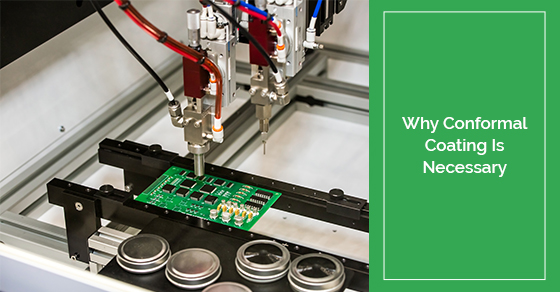Why Conformal Coating Is Necessary
Conformal coating has many benefits and is considered a necessity for many processes. Many sensors and electronic controls in the gas and oil industry are subjected to a wide array of chemicals, as well as large amounts of moisture that are produced in the atmosphere.
They are also often subjected to a plethora of other substances that can, in due time, corrode the circuit board as well as its myriad components. As such, conformal coating is a must to avoid any pitfalls and lost funds in the long run. Here, we will dive into the benefits of conformal coating for various B2B applications.
Why Conformal Coating is Necessary
In time, many different components can fail if they are not tended to in the proper manner. More often than not, negligence or ineptitude can lead to something in the product chain failing, and certain products may need to be scrapped altogether, or may be salvaged with some prudent repair work.
However, there is a relatively easy technique or method that can help augment the longevity of a bevy of different electronic devices, and that process is known in the industry as conformal coating. Conformal coating serves as a polymer or a chemical that is applied to circuit boards after they have been tested and populated.
How Conformal Coating is Applied
The easiest method to apply the conformal coating substance is via a state-of-the-art silicone spray. In most cases, the product can be purchased in a spray can and is usually applied to all sides of the circuit board so that all of its components are thoroughly coated.
However, there is one potential downside to this application, as it may not be entirely uniform, and, with a little effort, the substance can be removed from the board and its components.
However, this seemingly deleterious downside can also be seen as a benefit in certain scenarios, as circuit boards that have been damaged can be repaired fairly easily because the substance can be removed easily. In fact, it can be argued that repairs become more cost effective when conformal coating is applied, as it is easy to remove.
A More Reliable Method
If reliability is a top priority, then a more dependable method would involve using a conformal coat that is UV cured. In fact, most top companies in the industry will use the aforementioned process due to its added reliability, as saving money and reducing downtime are top priorities for most top-tier companies.
Many such companies will also employ an automated process to get the work done, with the board being coated or sprayed uniformly, followed by a baking process that takes place in a top-of-the-line UV oven.
Hence, UV cured conformal coating is seen by many experts as being a more durable process. As such, the devices that are manufactured using this technique will have a much longer lifespan, which will reduce the amount of e-waste, and reduce repair costs and other productivity pitfalls.
However, the process is not necessarily perfect, as the fact that it is more durable may cause issues if damages were to arise. For example, if you had to rework your electronics at some point, then you would need to exert a large amount of effort, and spend quite a bit of time to rework your electronics because UV cured conformal coating is hard to remove.
In fact, sand blasting is often the method that is implemented to remove UV cured conformal coating, with ground walnut shells being the most commonly used substance to remove the components from the circuit boards.
Conformal Coating Thickness Matters
Achieving the proper conformal coating thickness is of the utmost importance. In fact, it is considered one of the most essential variables or factors within the conformal coating process. As such, you will need to ensure that the conformal coating thickness will fit within the range that is outlined in the technical datasheets.
This is because coating manufacturers will perform a wide array of standardized testing within the parameters, so if you were to accidentally deviate from the range, then you may increase the risk of serious defects during subsequent manufacturing phases. For instance, exceeding the upper limits may lead to a CTE mismatch, bubble formation in the dry conformal coating film, cracking, and wrinkling.
A Summary
Some industries underestimate the benefits of conformal coating, especially the oilfield industry. In reality, however, electronic design components in the oilfield and other associated industries can benefit greatly from conformal coating, as it is a very cost effective and durable process.
Hence, if your main goal is to manufacture products that will be able to endure a wide array of climatic conditions and harsh environments, then you should be well aware of what you are obtaining. And, if you do decide to have your electronics and its components conformally coated, then you need to be aware of the various types that are available as well as the process that will be used, as doing so will save you time and money in the long run.
The Circuits Central Difference
If you would like to learn more about the benefits of conformal coating and why it is necessary, then please visit our website to contact us. Circuits Central uses on-site air cured as well as UV cured conformal coating, and both are applied with robotic, automatic coatings that ensures unrivalled precision and repeatable results.
We apply our conformal coating to various electronic equipment in order to ensure industry leading long-term performance and superlative reliability, providing comprehensive protection against mechanical vibrations and stress, chemicals, dirt, moisture, dust, and other contaminants and particulates.
Furthermore, we also specialize in design and engineering, manufacturing and integration, and various a la carte solutions upon request. Having worked with clients in the consumer, medical, commercial, industrial, aerospace, and defense sectors, we can be reached at 1-888-821-7746 for any business inquiries or if you would like to obtain a free, no obligation quote and consultation.

